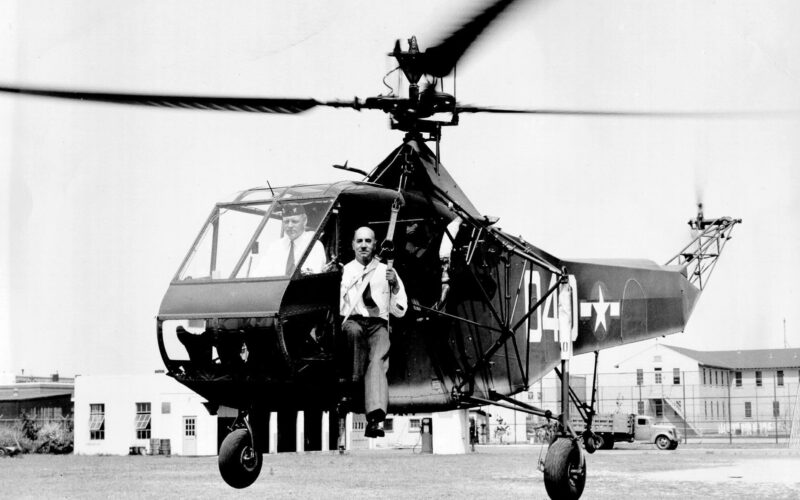On this day in 1972, world renowned aviation pioneer Igor Sikorsky passed away. Known as the father of the helicopter, Sikorsky designed the first single-rotor helicopter and paved the way for all modern rotorcraft today.
The story of Sikorsky began in the late nineteenth century. Born in Kyiv, Ukraine, which at the time was part of the Russian empire, the young Igor had a passion for aviation. It was at a formative time for aviation, when it was transitioning from the era of hot air balloons to the first ever propeller driven aircraft.
Growing up, Sikorsky was greatly influenced by his parents. It was from his mother that he inherited a taste for literature. Like many people of his generation, Sikorsky grew up with the novels of French author Jules Verne. Books such as “Around the World in Eighty Days” and “Voyages Extraordinaires” brought topics like world travel, culture and science to readers in different countries. This prompted the young Igor to dream of a new mode of transportation, one that could rival that of the train or ship. In addition to Verne, Sikorsky also seemed to be interested in Leonardo da Vinci, specifically his drawings of the flying machine.

Leonardo da Vinci’s aerial screw and lifting wing
Upon finishing his education at the Kyiv Polytechnic Institute, Sikorsky’s pursuit of aviation only deepened. Though his first attempt at developing a helicopter was unsuccessful, it did not deter him from pursuing his ambitions, which went wider than just rotorcraft. In 1910, he began working for the Russian company Russo-Bolt vehicles. With them, he created in 1913 the first four-engine propeller aircraft: the S-21, also known as the Russian Knight.
The political situation at the time pushed Sikorsky’s life in a completely different direction. The October revolution of 1917, along with Soviet threats, convinced him to flee to the United States. In the US, an encounter with another Russian emigrant, the well-known composer Sergei Rachmaninoff, kickstarted Sikorsky’s new career.
With financial support from Rachmaninoff, Sikorsky opened his own company, known as the Sikorsky Aircraft Corporation, which focused on amphibian aircraft. A notable partnership with Charles Lindberg led to the development of the S-42, also known as the Clipper Flying Boat, which became a symbol of interwar commercial aviation. The name Clipper was taken from the fast and maneuverable ships of the nineteenth century.

A Pan American Airlines Sikorsky S-42 seaplane (Credit: SDASM Archives)
It was only a few years later that Sikorsky achieved success with his first passion: the helicopter. The first prototype, the Vought-Sikorsky VS-300, featuring a single three-blade rotor, was released in 1939, an innovative design that is still used with helicopters of today. The next triumph came in 1942, with Sikorsky’s R-4 becoming the first helicopter to be produced in series. This model was a popular choice in both US and British military transportation.
From that moment on, Sikorsky’s company was devoted mostly to helicopters, with his rotorcraft becoming ever more in demand.
Igor Sikorsky died at his home in Connecticut in 1972. Two years later, the company unveiled one of the most iconic helicopters was born: the Blackhawk.
The father of the helicopter left behind a legacy of aircraft engineering which is remembered to this day. Though 2015 saw the acquisition of Sikorsky’s corporation by Lockheed Martin, his name and vision endure as a brand up until this day.

Sikorsky UH 60 Black Hawk helicopters (Credit: U.S. Army photo)

